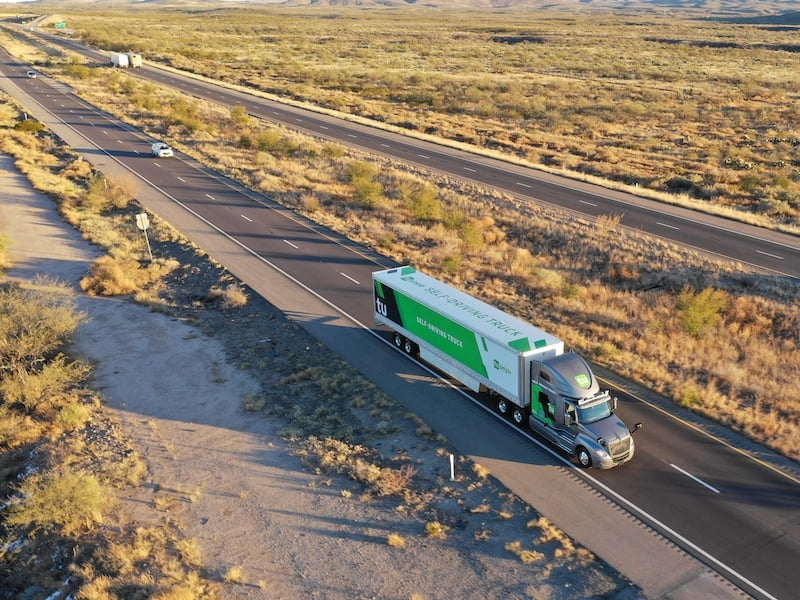The autonomous future of freight has picked up momentum, and the latest shift of gears sees the US Postal Service launching a test phase for trucks hauling mail across three Southwestern US states.
The test contract was awarded to TuSimple, a San Diego self-driving truck startup, with trucks driving a route between Phoenix, Arizona, and Dallas, Texas, through a third state, New Mexico.
“This run is really in the sweet spot of how we believe autonomous trucks will be used,” TuSimple chief product officer Chuck Price told Reuters.

“These long runs are beyond the range of a single human driver, which means today if they do this run they have to figure out how to cover it with multiple drivers in the vehicle.”
The tests will see a safety driver behind the wheel in case of emergency, while an engineer will ride in the passenger seat. Five round trips of 3,380km, taking 45 hours, will take place during the test, driving on major interstate highways during day and night.
According to a TuSimple, one of the interstate corridors included in the test program accounted for “60 per cent of the total economic activity” in the USA. The company said the I-10 interstate route would be an important part of its ongoing commercial operations.
TuSimple is fighting the likes of Tesla and Uber when it comes to self-driving truck development, but the company is well on its way, having achieved a unicorn valuation during its last funding round.
It holds investments from companies like Nvidia and China’s Sina.
TuSimple plans to have a commercial fleet of 50 self-driving trucks by next month.
The trucking industry is a key target for self-driving businesses, with safety an ongoing concern (in Australia, heavy vehicles were involved in 17 per cent of the road toll in 2015, while making up just 10 per cent of all traffic) and companies struggling to continue to hire new drivers.
In both the USA and Australia, truck drivers are largely an ageing group with few young people opting to pursue the career.
The American Trucking Associations believes there will be a shortage of 175,000 drivers by 2024. Australia restricts licensing of B-double vehicles to those over 25 years old, which means school leavers are not exposed to driving as a career option in the first place.
It’s a difficult scenario when companies can’t put enough drivers in the driver seats they have available, but with self-driving trucks right around the corner it is hard to argue there will be job security for any who do decide to train for this line of work.
Australia has self-driving mining trucks and autonomous trains being used in the mining industry in Western Australia, but we’re yet to see self-driving truck tests hitting the roads.
These tests in the USA show that commercial long haul is just around the corner, and what works on American interstate routes would likely hold similarities with some of the big intercity routes here in Australia too.
Given road freight is expected to only grow in coming years while the truck industry struggles to replace retiring drivers, local testing would seem like an important step that needs commercial engagement and policy management to get things underway.
Do you know more? Contact James Riley via Email.

